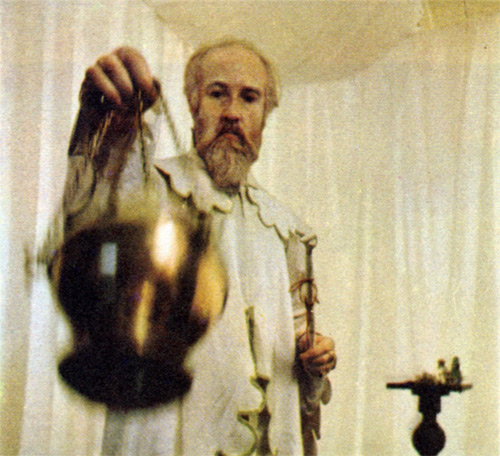Can you begin to imagine the amount of time spent by the human race in pursuit of magic? I am not speaking metaphorically here. I mean can you imagine the sum total man-hours devoted to actively invoking, incanting, intoning, beseeching, divining, scrying, summoning, chanting, conjuring, and casting? And though, so far as we know, not a single minute of all that feverish sorcery yielded the intentional result with greater efficiency than chance, magic continues, and will continue, probably forever. And do you know why? Well, setting aside the fact that the whole endeavor is damn poetic specifically because of its futility, fascinating because of its baroquely fanciful trappings, pathos-packed because of its provenance, and let’s face it, pretty hilarious on the whole, there is another, simpler reason; one which I believe will be self-evident if you take a gander at what I’ve set out for you below…
Contact (i)
Search (i)
Annex (i)
Special Projects (i)
Downloads (i)
Shop (i)
Archives (i)
Links (i)
Feeds: rss2 | atom (i)

Abracadabra!


Objectified Circuitry
There is something terrifically satisfying about seeing, with your own eyes, the humble genesis of world-changing creations. The image above is a case in point. What we see pictured here, as I’m sure many of you already know, is the world’s first integrated circuit, created by Jack S. Kilby in the summer of 1958. That this creation, with its bubbled wax and carefully twined wire, is the work of human hands is unmistakable. The seemingly messy, cobbled-together, simplicity of it is heartening somehow when one compares it to the microchips of present day, which a human hand is not meant to touch and could only hope to damage with its meaty, imprecise groping. This is a technology which though reality-shaping has, in large part, been complexified right out of direct human contact.
Below, for your viewing pleasure, I’ve reproduced 16 images from the book State of the Art, by Stan Augarten, published in 1983, by way of illustrating that even 25 years ago, a mere halfway-point in this technology’s development, complexity had evolved the integrated circuit out of human hands, and, for most of us, created something really and truly indistinguishable from magic.

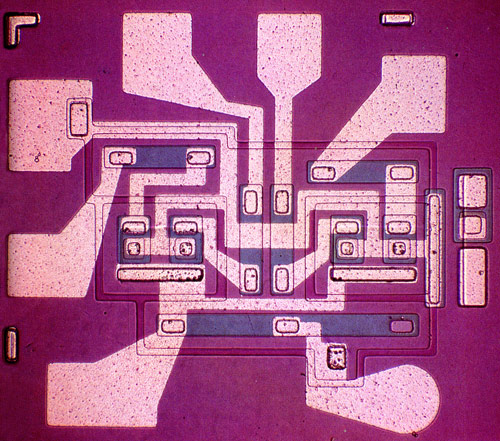
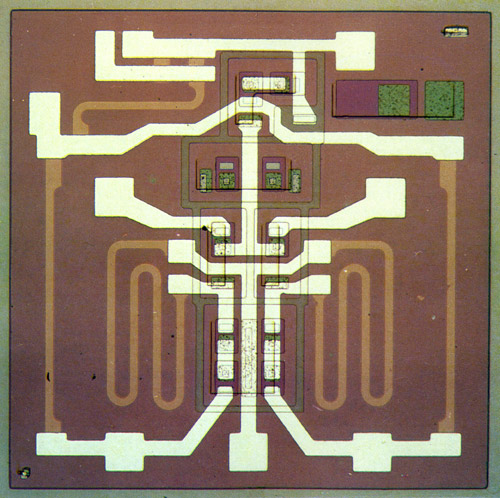
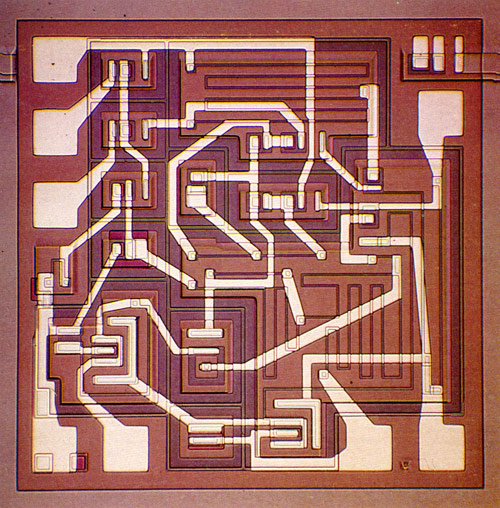


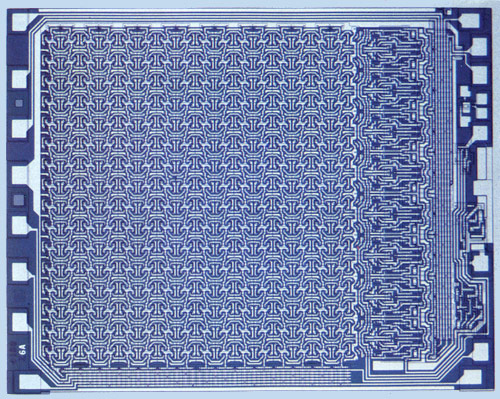



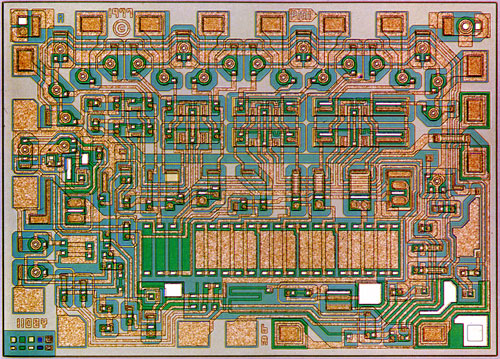
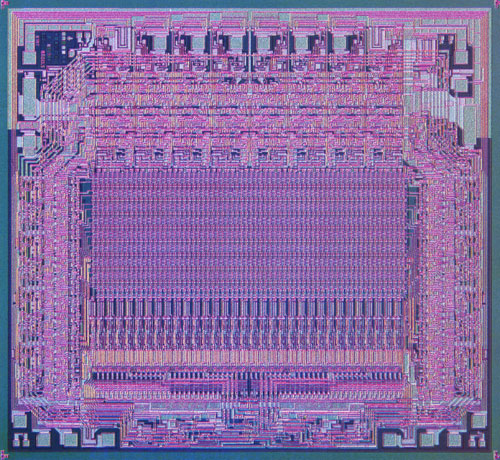
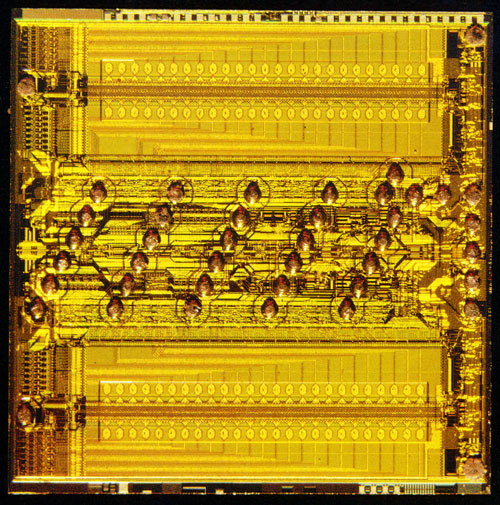

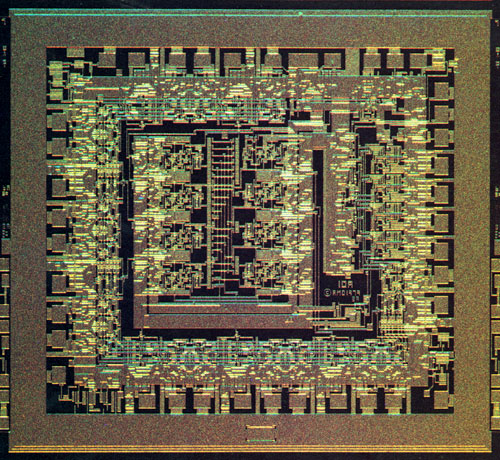

For the most part, as was surely the book’s intention, I find these to be quite beautiful objects from a purely aesthetic point of view. Whether I understand them or not I can still appreciate their appearance. Interestingly, however, relative complexity has a role in even this most basic way of regarding the IC I think.
Perhaps it is simply the mind’s facility for pattern recognition but I find the earlier chips evoke one set of largely pleasant aesthetic comparisons, while the more complex chips evoke an entirely different, less obviously pleasant set. In the earlier chips I see science-fictional interiors and illustration, information graphics, diagrams, and the outer fringes of minimalism. In the later one’s however, I see parking lots, and power plants, and freeway systems, and refineries along the Garden State Parkway.
I’d make the argument that from a visual standpoint, there is a sweet-spot in evidence here, where the forms which make-up the IC’s are complex enough to grab the eye, hold attention, and ignite curiosity, but still simple enough to please our senses of order and balance; or to put it another way, simple enough to feel familiar but complex enough to remain interesting.
Then again, perhaps It’s just my own aesthetic prejudices at work.
In any case, I hope you enjoyed.
For more on the subject see:
History of the Integrated Circuit at nobelprize.org.
Chipshots at Molecular Expressions.
And finally, check out Smithsonian Chips which, I only realized after I scanned all these images, has a full version of State of the Art, by Stan Augarten on offer.
hide full text

This photograph, shot in 1840 and titled Self Portrait as a Drowned Man, is not of a drowned man, and if it had been it would be far less interesting or important. This humble image, so far as anyone knows, can claim all of the following honorifics- First instance of intentional photographic fakery. First photographic practical joke. First use of a photograph as propaganda / protest. And, quite possibly, a result of the world’s first reliable photographic process, direct positive or otherwise.
The image was shot by (and pictures) one Hippolyte Bayard. He was a French civil servant who, in his spare time, happened to invent his own method of reliably capturing photographic images on paper; an interesting fact considering, at the time, none other was known to exist, anywhere.
Hippolyte Bayard is not exactly a household name is it? More of a “buried in an unknown ditch on the other side of the Earth, who knows when or why, and basically forgotten” kind of name. It might have been otherwise, and during his lifetime, Mr. Bayard was well aware of that fact.
As it happens, after inventing his direct positive photographic process, Hippolyte was visited by one François Arago, who convinced him, using who knows what logic, to postpone making an announcement of his find to the French Academy of Sciences. As it turns out François Arago was a close personal pal of another fellow, who shortly thereafter made his own presentation to the members of the Académie des Sciences, by the name of Louis Daguerre. Ever heard of him? Yeah, thought so.
By the time Mr. Bayard finally did present to the Académie they’d already made a substantial investment in Daguerre and his process. In as much their reaction was to pay Bayard a piddling sum for his troubles and assure him his process was so inferior as to be essentially useless. Nice guys.
So basically poor ol’ Hippolyte got shafted, hard, and he knew it.
Which brings us to Self Portrait as a Drowned Man.

Self Portrait as a Drowned Man (more specifically, the series of “Drowned Man” photographs he shot) was Bayard’s protest. It wasn’t as metaphorically subtle a protest as it would seem at first glance either. On the back, written in third person, is Hippolyte’s suicide note in which states his grievance rather explicitly.
Quote: “The corpse which you see here is that of M. Bayard, inventor of the process that has just been shown to you. As far as I know this indefatigable experimenter has been occupied for about three years with his discovery. The Government, which has been only too generous to Monsieur Daguerre, has said it can do nothing for Monsieur Bayard, and the poor wretch has drowned himself. Oh the vagaries of human life…! He has been at the morgue for several days, and no-one has recognized or claimed him. Ladies and gentlemen, you’d better pass along for fear of offending your sense of smell, for as you can observe, the face and hands of the gentleman are beginning to decay.”
Ha. Stick it to ‘em Hippolyte!
So, evidently, among it’s other distinctions Self Portrait as a Drowned Man also represents the worlds first photographic “fuck you.”
Bayard continued to take photographs for 47 more years until his death in 1887, but so far as his place on the great big list of history’s firsts he would have to make due with the rather miniscule honor of having held the world’s first public exhibition of photographs in June of 1839.
Wahhh-wahhh-waaaaaaaaahhh.
To the Académie and their endless ilk from time immemorial to present day, I offer, on Hippolyte’s behalf, a hearty “Je deteste, Ptuu!”
One last thought:
Squashed by the interests of the establishment? Disgruntled? Resistant? Resultantly sarcastic and innovative by necessity? Seems a pretty common pedigree by today’s standards. Could it be Hippolyte was actually the first bonafide “artist” working with the photographic process?
hide full text
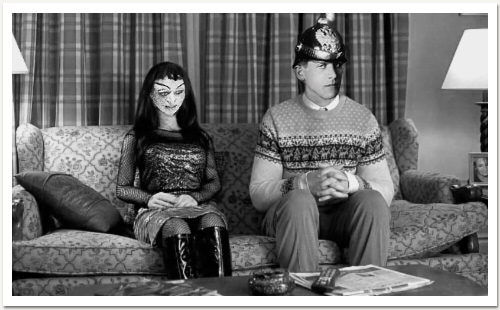
I wonder whether any of you have seen the film Lars and the Real Girl? It was a sweet, chaste sort of film considering its casting of a Real Doll as the female lead, and though I enjoyed it I couldn’t help but spend its entire length being reminded of the altogether less sweet, less chaste, true life corollary of “Oscar and the Alma Doll.”
The synopsis of this tale might go as follows- In 1911 Viennese artist Oskar Kokoschka (or as the German press referred to him “der tolle Kokoschka”) meets Alma Mahler, the widow of composer Gustav Mahler. A relationship begins consisting mainly of hot sex and expressionist painting. Or “the good life” as it’s sometimes called. Oscar, for his part, falls obsessionally, passionately, possessively hard. Alma... not so much.

By 1913 their relationship is strained-
Quote: “They travelled to Italy together, and on one occasion visited the Naples aquarium. Kokoschka watched an insect sting and paralyse a fish, before devouring it, and at once associated the scene with the woman by his side.” -Edward Lucie-Smith, Lives of the Great 20th Century Artists.
Alma became pregnant and, against Oscar’s wishes, has the child aborted. Oscar is crushed. At the outbreak of World War I in 1914 he volunteers and serves with the Austrian army. In 1915, while stationed in Russia, Oscar receives a serious injury via unfriendly bayonet. He returns from the front to find Alma has married an old flame, architect Walter Gropius. Oscar is double-crushed. In 1918, underlining military doctor’s previous assessment of him as “mentally unstable,” he reacts to all this heartache the way any good, obsessive, expressionist painter would-
Detailed physical descriptions and full-scale drawing in hand, he commissions the doll-maker Hermine Moos to create a life-sized Alma Mahler doll to her exact, anatomically accurate specifications.
Quote: “Yesterday I sent a life-size drawing of my beloved and I ask you to copy this most carefully and to transform it into reality. Pay special attention to the dimensions of the head and neck, to the ribcage, the rump and the limbs. And take to heart the contours of body, e.g., the line of the neck to the back, the curve of the belly. Please permit my sense of touch to take pleasure in those places where layers of fat or muscle suddenly give way to a sinewy covering of skin. For the first layer (inside) please use fine, curly horsehair; you must buy an old sofa or something similar; have the horsehair disinfected. Then, over that, a layer of pouches stuffed with down, cottonwool for the seat and breasts. The point of all this for me is an experience which I must be able to embrace! Can the mouth be opened? Are there teeth and a tongue inside? I hope so!” -Oscar Kokoschka
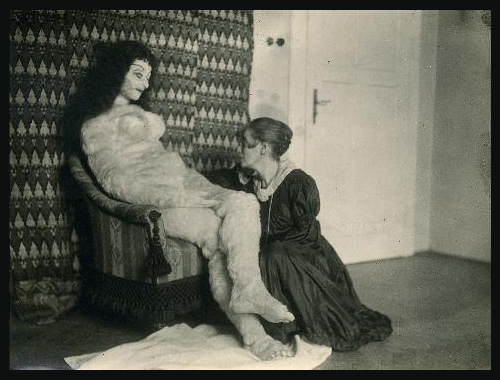
The doll takes Hermine Moos 6 months to complete. Oscar is impatient.
Quote: “I would die of jealousy if some man were allowed to touch the artificial woman in her nakedness with his hands or glimpse her with his eyes! When shall I be able to hold all this in my hands?” -Oscar Kokoschka
Oscar had by this time already found another playmate. A Serving-maid by the name of Hulda. But though she poses for him, calls him captain, carves his initials into her breast, and offers herself to him bodily, Oscar remains preoccupied.
Quote: “I was preoccupied with anxious thoughts about the arrival of the doll, for which I had bought Parisian clothes and underwear. I wanted to have done with the Alma Mahler business once and for all, and never again to fall victim to Pandora’s fatal box, which had already brought me so much suffering.” -Oscar Kokoschka
In February of 1919 the Alma Mahler Doll is delivered.
Quote: “In a state of feverish anticipation, like Orpheus calling Eurydice back from the Underworld, I freed the effigy of Alma Mahler from its packing. As I lifted it into the light of day, the image of her I had preserved in my memory stirred into life.” -Oscar Kokoschka
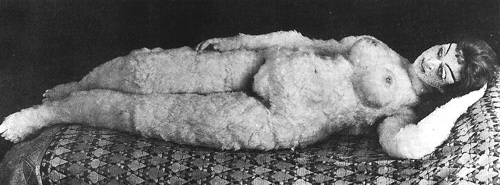
The doll which he’d hoped would have “natural feeling” skin is, in fact, made with feathers and, as might be expected, Oscar is disappointed with the results. He explains in a terrific letter to Hermine Moos-
Quote: “I was honestly shocked by your doll which, although I was long prepared for a certain distance from reality, contradicts what I demanded of it and hoped of you in too many ways! The outer shell is a polar-bear pelt, suitable for a shaggy imitation bedside rug rather than the soft and pliable skin of a woman. The result is that I cannot even dress the doll, which you knew was my intention, let alone array her in delicate and precious robes. Even attempting to pull on one stocking would be like asking a French dancing-master to waltz with a polar bear!” -Oscar Kokoschka
Even so Oscar does his best to make due. He paints and sketches the doll as he once painted Alma. Further he evidently tasks Hulda with spreading rumors about the doll, which they refer to as “The Silent Woman.” Stories emerge about his long carriage rides with it, their trips to the opera together, not to mention less public and presumably more sweaty liaisons.

In the final reckoning though, a doll could never really replace a woman now could it? I mean, a doll that you have an intimate relationship with can allow you to express insanity, but it could never drive you there, at least not with the speed and giggly zest of the real thing.
At a party, organized as the Silent Woman’s introduction to Oscar’s friends, the doll unexpectedly meets her destiny.
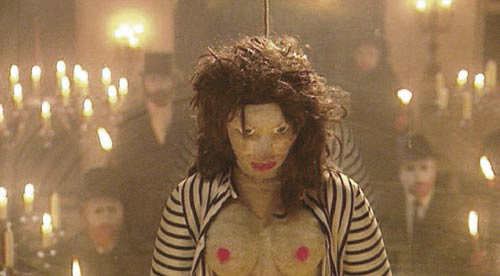
Oscar explains the events as follows-
Quote: “Finally, after I had drawn it and painted it over and over again, I decided to do away with it. It had managed to cure me completely of my Passion. So I gave a big champagne Party with chamber music, during which my maid Hulda exhibited the doll in all its beautiful clothes for the last time. When dawn broke - I was quite drunk, as was everyone else - I beheaded it out in the garden and broke a bottle-of red wine over its head.” -Oscar Kokoschka
Or so the story goes.
-
For more see:
Oskar Kokoschka,
The Puppet,
The Silent Woman,
and The Chamber Maid
at Alma-mahler.at.
Man-Made Woman by Jon Stratton.
Oskar Kokoschka at the Artchive.
Oskar Kokoschka at Encyclopedia Britannica Online.
Hope you enjoyed.
hide full text

Subjectivity and the Subjugated
Feathers and beak but not a bird, not quite. It is roughly man-shaped; and though the head tilts and the arms outstretch like a midnight stranger, without a face and without hands it is not a man either, not quite. It is Man-but-not-Man, that most ancient mold for the manufacture of disquiet, never failing to lend a nightmarish quality to the unknown. The light is cluttered with hard shadows and the mind, unsure, is forced toward interpretation. You are a child and it is a swooping, enveloping horror. You are a hunter and it’s an avenger. You are a Freudian and it is your mother hovering, unreachable, in the middle-distance. You are a seer and it is an omen. You are a vaudevillian and it is a punch-line delivered into silence. You are a captain of industry and it is an accusatory night-sweat. On and on for each. At bottom its simple: you are a you and it is not, which is enough. Its “otherness” provokes an aggressive subjectivity.
The figure in the image is actually a Kwakiutl tribesman dressed as a Thunderbird. It’s a detail of a photograph shot by Edward S. Curtis, published in 1914. If you’ve never heard of Curtis he was a portrait photographer, living in Seattle, who decided sometime around 1900 to begin documenting the Native American tribes living in the Pacific Northwest. This project, with eventual interest of Theodore Roosevelt and resultant funding by J.P. Morgan, evolved into a 20 volume ethnographic opus called The North American Indian. The first volume was published in 1907, the last in 1930, at which point Curtis had shot about 45,000 photographs of over 80 separate tribes. Impressive though those numbers are, and expansive though the project was ⊕ Curtis died in 1952, broke, and with his life’s work forgotten.
“They cannot represent themselves, they must be represented.” So said Karl Marx. Were that representation pictorial and cultural rather than political, the sentiment might well be characterized as the driving force behind The North American Indian project. Curtis was a strong adherent to the prevailing sense that the American Indian was a “vanishing race” with no hope of maintaining any identity as Indian, and that it was the duty of the dominant culture to record the existence of the one being absorbed.
It was this conviction that lead him, in the course of his documentations, to go so far as to stage photographs depicting tribal traditions which had gone out of popular practice 50 years prior to his arrival with camera in hand. He paid tribes to undertake ceremonies out of season and reestablish ceremonies no longer practiced. He brought with him props, wigs, shirts, and other accouterments to “reenact” scenes, and was careful to remove “modern” items already adopted by tribes from the frame before shooting. His interest was in the “traditional” Indian, regardless of whether those traditions had already evolved away from the preconceptions of white america.
It’s because of this subjective tampering that Curtis’ photographs, even after their rediscovery and popularization in the 1970’s, remain somewhat controversial. On the one hand there are charges that his photographs, to large degree, simply reenforced the condescending stereotype of the “noble savage.” On the other hand it is unarguable that much of the material in The North American Indian does, in fact, represent unique ethnographic data recorded nowhere else. The prevailing attitude toward the project seems to be that though it is most assuredly “of its time,” harboring all manner of preconception, it is none the less invaluable for what it did manage to record.
In any case as regards Curtis’ life work I think it’s important to mention two things:
1) Even without intervention or the use of props or staging, photographs of this kind, framing a conquered culture through the conqueror’s lens and produced specifically for the conqueror’s consumption, will inherently deal in presuppositions. That seems inescapable. They will reinforce stereotypes to the exact degree to which the viewer, or framer, holds them dear.
2) Regardless of exactly the nature of what his photographs evoke, they are evocative, and very often beautiful, which is possibly the best one can say about a photograph from the artist’s standpoint. Not from a documentarian’s, or an ethnologist’s standpoint certainly, but from an artist’s.
Now to the photographs themselves…
Let me be the first to admit that when you have a collection as large as Curtis’ to draw from, you can gather together a group of pieces that illustrate damn-near any point of view you wish to support. For my part, I don’t want to drive home any particular point about Curtis’ outlook or the experience of the Native American’s he photographed.
I chose 18 images, drawn mainly from his time spent with the Kwakiutl and Navajo tribes, and exclusively of men obscured by ceremonial dress, their humanity left only as a vague outline, because I find them to be, as a group, a particularly potent illustration of the subjectivity inherent to viewing not only photographs of other cultures, images of the “Other,” and images of the unknown, but images of the past in general. These photographs are of men without men’s faces, without eyes to search, without familiar situations to read into, and so you are left to your own perceptual devices.
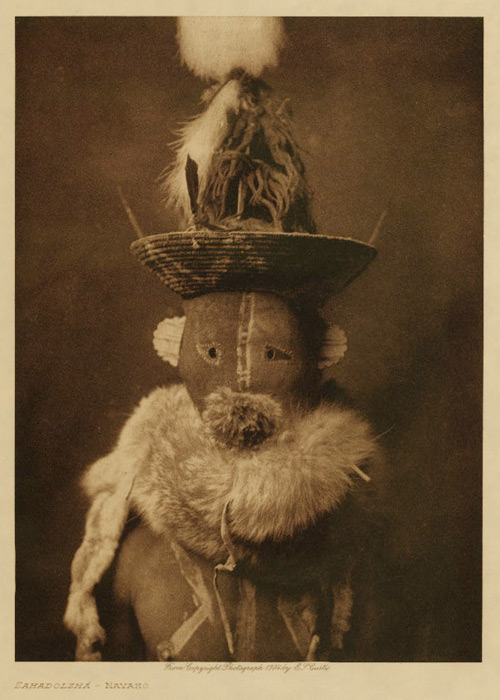
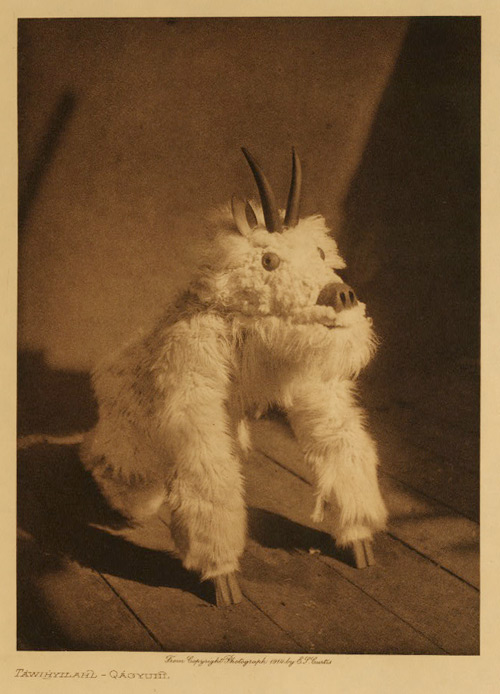
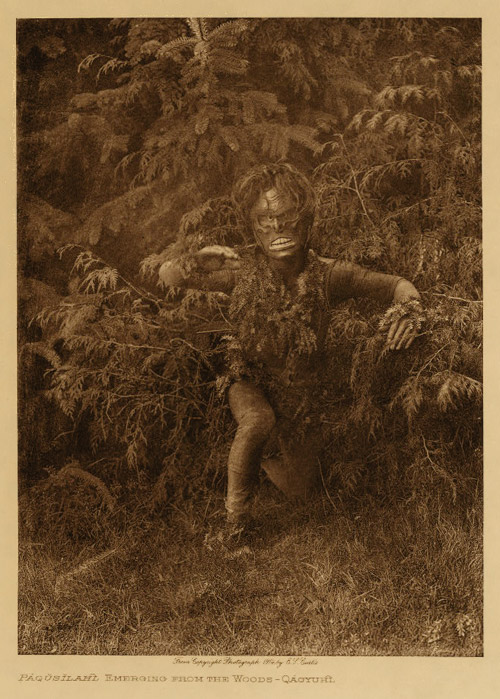

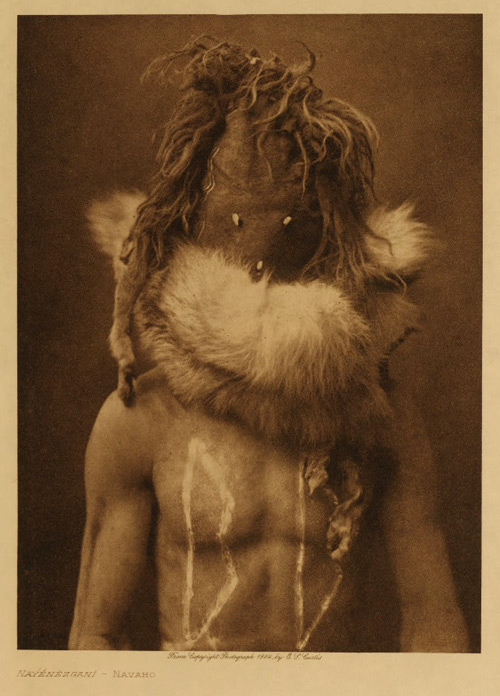
Quote: “It is a truism that to visitors of a new land – certainly to settlers – the original inhabitants were profoundly Other: The settlers may have had to struggle physically with the indigenous people for possession of the land, and in the process the original inhabitants became that which the settlers defined themselves against. It was virtually inevitable that the representations… would incorporate, reflect, or respond to, perhaps justify, the assumptions of the dominant (whites). ...The representations produced by the project tend to conform, in other words, to the lineaments of “the white man’s Indian.” ...Members of a dominant group, no matter how “intimate” their sense of their involvement with the people concerned, will represent nothing but the assumptions of their own kind.” – From the introduction to Edward S. Curtis and the North American Indian by Mick Gidley.
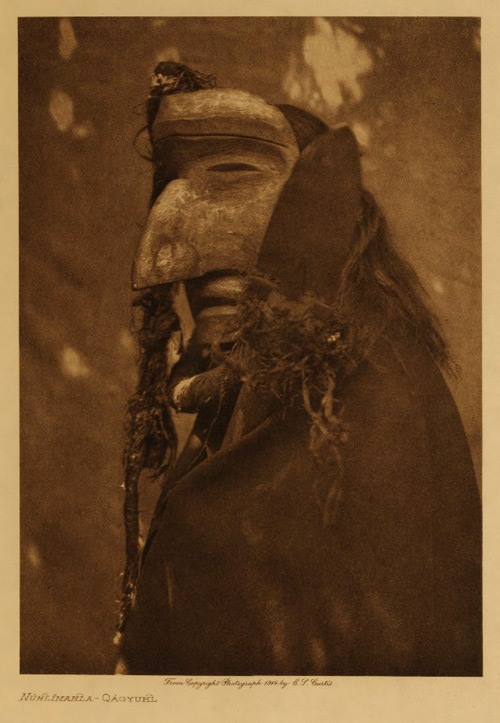
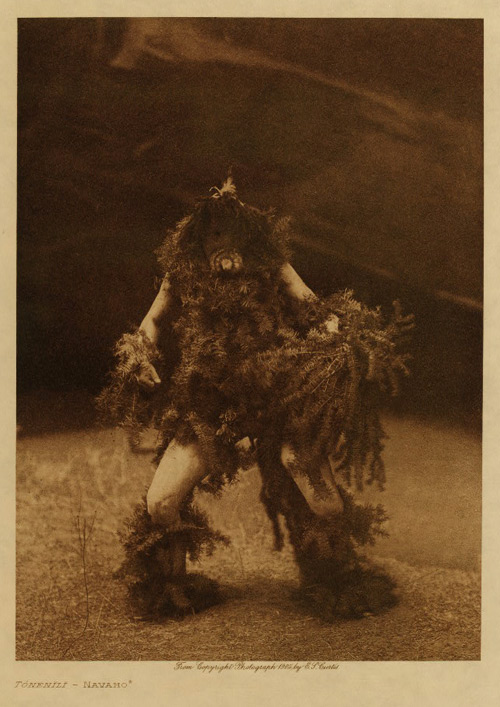
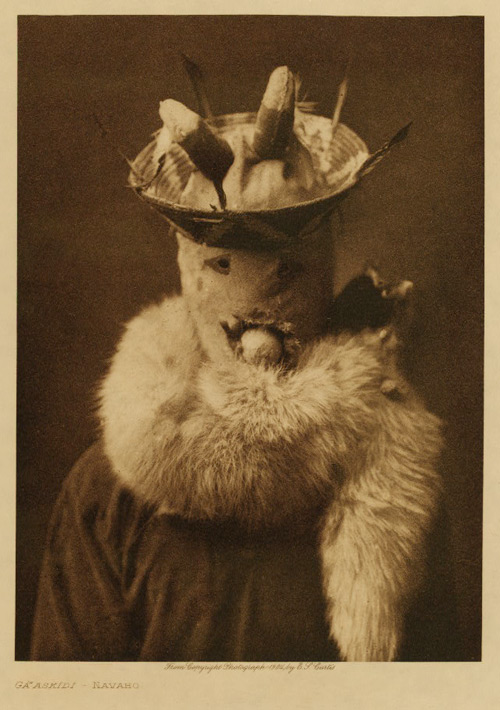
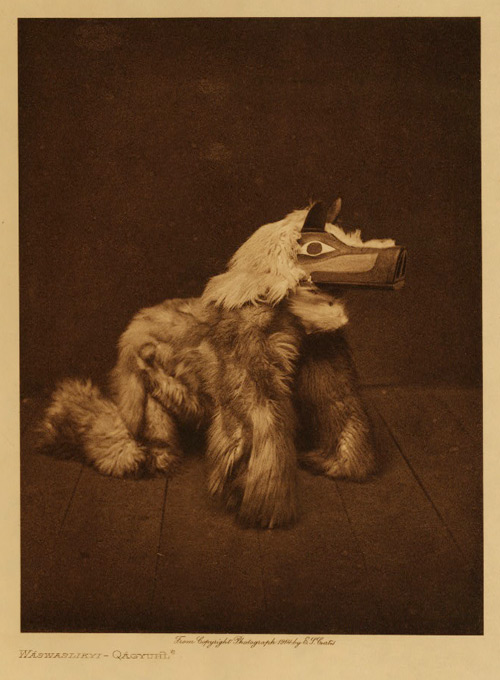
Quote: “If the modes of seeing in different communities are at least in some respect irreconcilable because they reflect incommensurable presuppositions about the human situation, how can such communities understand one another? Or are cultures windowless monads– communally solipsistic entities in which only those who share the same conventions can make sense of one another, with everything outside the cultures walls either ignored or relegated to the status of error? Can one culture use its own terms to say something about another culture without engaging in a hostile act of appropriation or simply reflecting itself and not encountering the otherness of the Other? –From Chapter 2 of Play and the Politics of Reading: The Social Uses of the Modernist Form by Paul B. Armstrong.

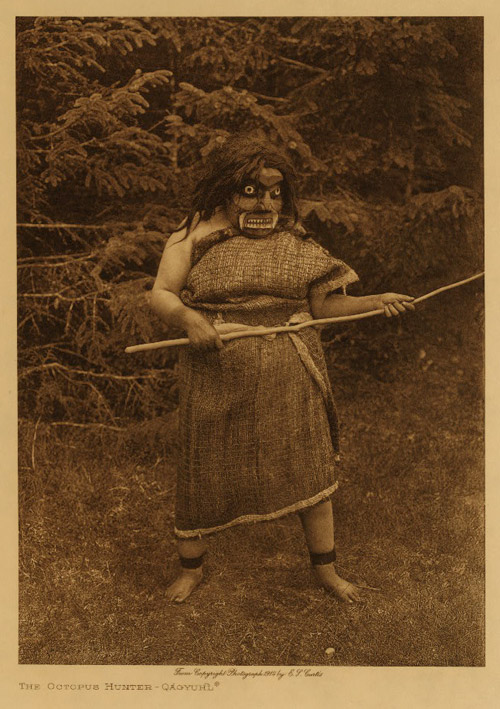


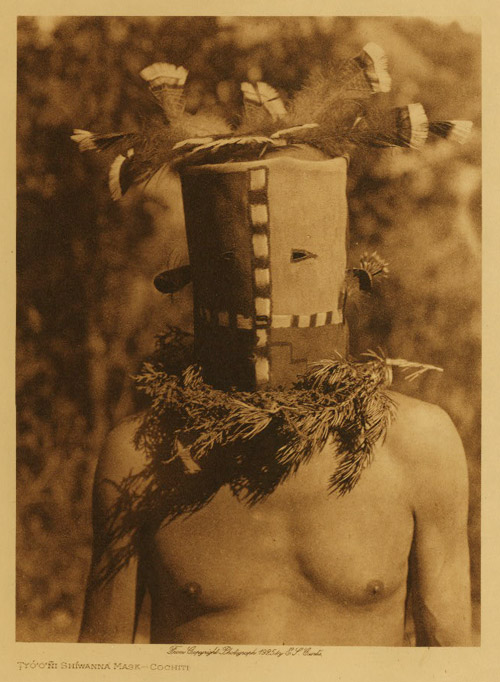
Quote: “When the last Red Men shall have perished, and the memory of my tribe shall have become a myth among the white man, these shores will swarm with the invisible dead of my tribe, and when your children’s children think themselves alone in the field, the store, the shop, or in the silence of the pathless woods, they will not be alone.” -Attributed to Cheif Seath in an address surrendering the Puget Sound region to Governor Isaac Stevens in 1854, but which is almost certainly a fanciful recreation set down by some unknown author many years later. Coincidentally, it was Seath’s daughter, Princess Angeline, who was Curtis’ first Native American subject.

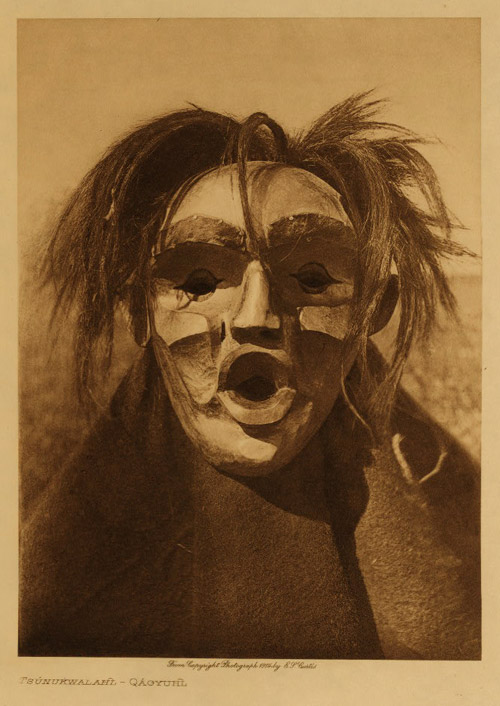
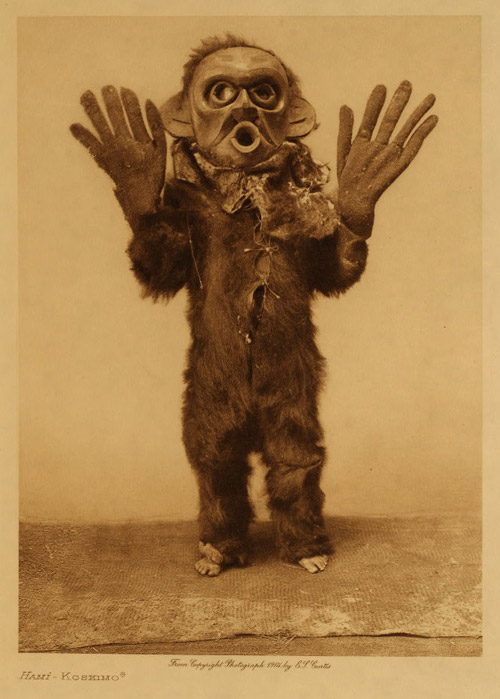
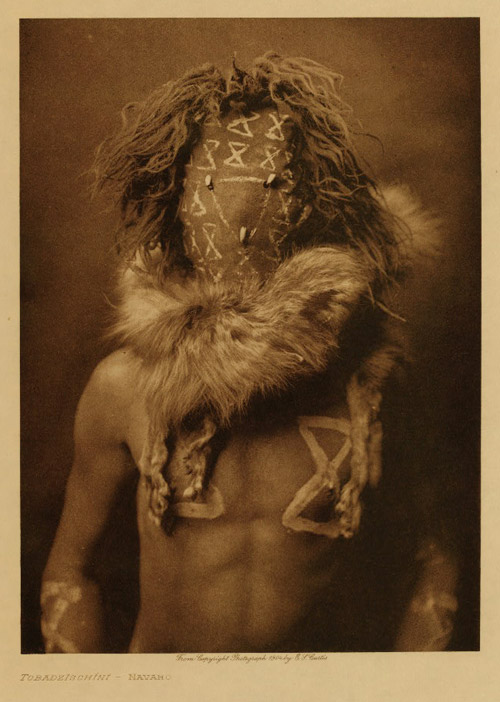
Personally I find this group of photos, in the almost total disembodiment of their actual subjects, really compelling. Their historical accuracy makes no difference. I can’t help but imbue them with a host of disparate, sometimes totally contrary emotions. My mind draws all kinds of corollaries and branches out into all kinds of narratives. Most likely you, yourself, draw a whole other set of conclusions…
Anyhow, though Curtis didn’t live to see it, his work is now widely written about and very well represented on the internet. Curtis’ story is a fairly interesting one, the debate over and reactions to his work even more so, and there is a whole lot of it to be seen out there if your so inclined-
Nortwestern University Collection
Library of Congress Collection
Old-picture.com collection
First People
Project Gutenberg
Edward S. Curtis in Context
Selling the North American Indian
Flurry & Company Ltd.
Video excerpts from Coming To Light
PBS American Masters
Prayer to the Great Mystery
The Imperfect Eye of Edward Curtis.
Etc, Etc, Etc.
Hope you enjoyed.
hide full text

